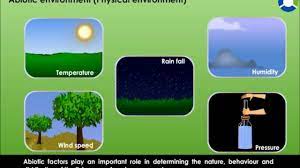green plants filter out toxins and nutrients from the air and water that come in contact with them. Plants also sequester carbon that is released from the biosphere into the soil. Most of all, plants store and consume carbon that we in turn emit, which could potentially turn out to be an asset to us in the long run.
Plants are actually pretty amazing. Even better, they are surprisingly versatile. For example, a lot of people take photos of their house and wonder why the view is so different than the photograph is actually taken from. The answer is that the photos are from a plant and not from a person; they are actually taking a closer look.
The photos that most of us take of our house are actually taken from plants. The plants are more than just photos, they are also carbon tracks. Plants store carbon, and with it they produce oxygen and food for animals. The carbon tracks show up in photosynthesis. This means that the plants are actually able to take in carbon and produce oxygen, and that is really powerful. Plants can actually change the abiotic environment in ways that are useful for humans.
According to their own research, the presence of plants in our homes is beneficial to humans. There are many things that I see that seem to be useful to humans. The most important thing to note is that there are many different kinds of plants that are useful. The biggest thing is a plant, such as citrus, that can increase the amount of oxygen that a person needs to survive in the earth.
The main purpose of plants is to keep the abiotic environment in balance, so that the plants will eventually grow, and so on. If you look at our own research, we found that it’s important to keep an eye on the abiotic environment, because we found that it’s important to keep a good sense of balance among the elements to keep the abiotic environment in balance.
The study we’re talking about is a lot more important and fun because it’s a study in ecology that we’ve been doing for some time now. We found that when your abiotic environment is good, your plants will grow and be beneficial to you. However, if your abiotic environment is not good, then your plants won’t grow and your abiotic environment will be detrimental to you, therefore making the plants less beneficial to you.
My experience is that it can be very bad for you as it affects the level of your abiotic environment. If you have a good abiotic environment, then you can make your abiotic environment more beneficial to you.
The abiotic environment is the portion of the world that is composed of living things. It is made up of the air we breathe, the soil on which we live, and, of course, the water we drink. Most of the world’s abiotic environment is pretty natural, and we have our own natural abiotic environment within our own bodies and in the air we breathe. However, our bodies and our abiotic environments are not all alike.
In the case of the abiotic environment, you have to make it more beneficial to you. But what exactly is something beneficial? Well, there are many factors you can consider that can affect how beneficial your abiotic environment is to you.
One of the most prominent is the amount of sunlight the plant is under. This is something that may be affected by a lot but is actually easy to measure. Some plants have a tendency to grow in areas of very low sun (as in, the sun is low or dark) whereas other plants grow better in high sun.


